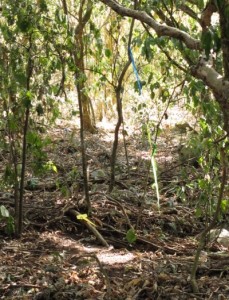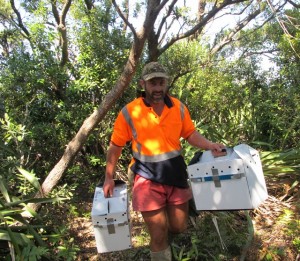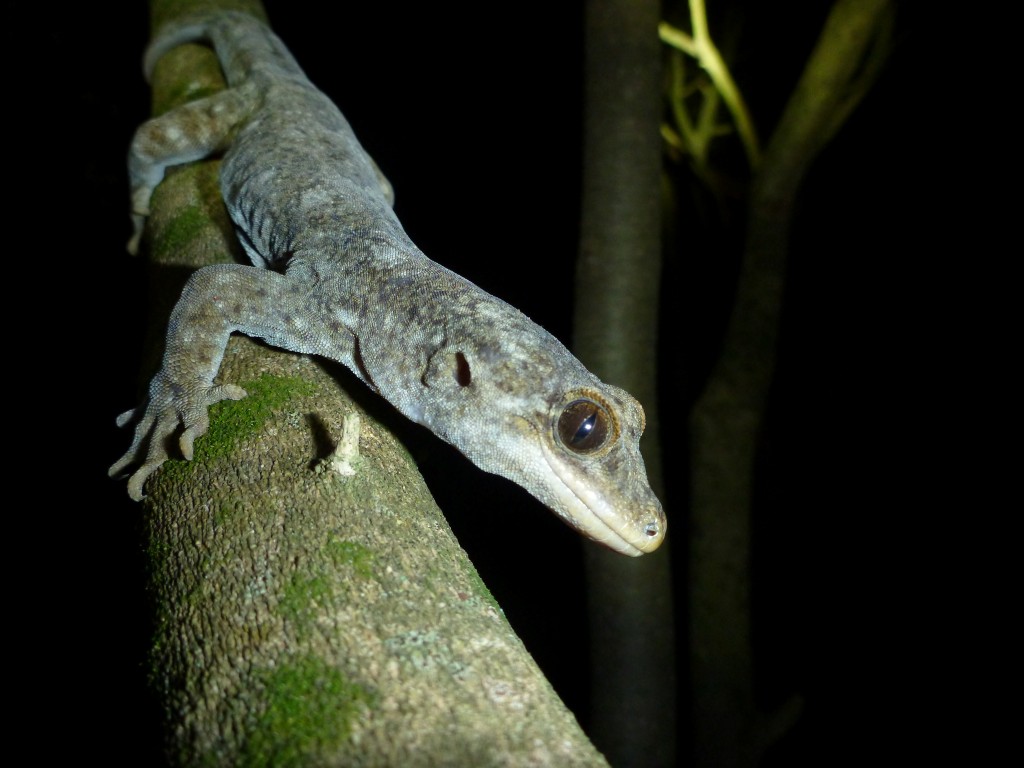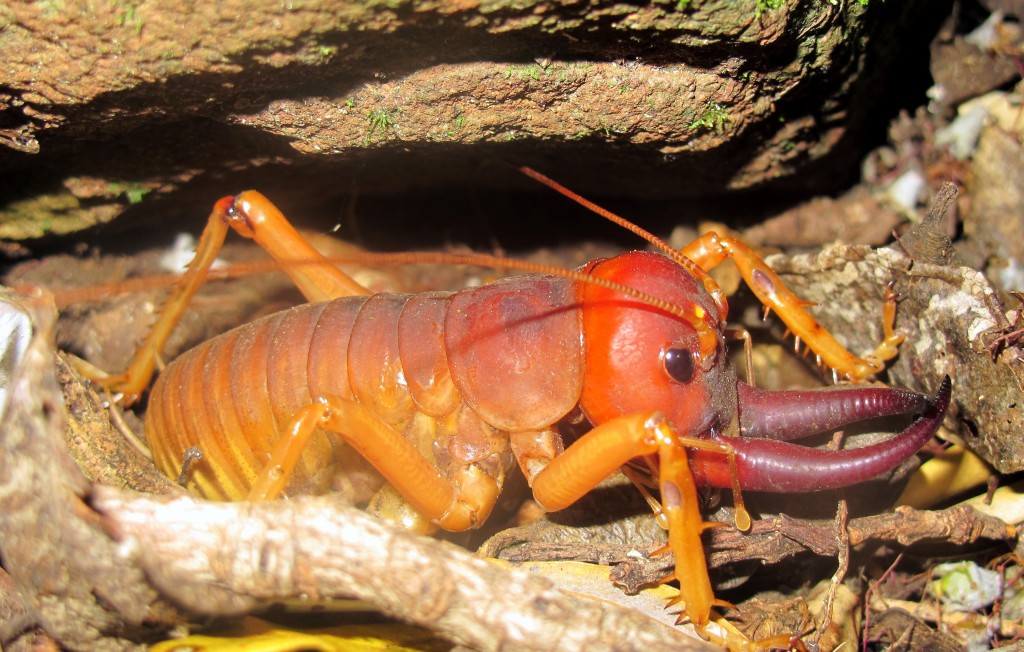All 70 chicks which were transerred to Motuora on 12th March are still doing well.
About 18 of them have been out of their burrows at night getting to know their new home. This is natural behaviour in preparation for fledging and heading off to sea.

Motuora Restoration Society has just completed a successful transfer of 70 chicks from Red Mercury to Motuora!
The chicks will fledge from Motuora and the hope and desire is that, when these chicks reach adulthood, after spending their first three years at sea, they will return to nest on Motuora and start a new colony there. Pycroft’s petrels have been recorded breeding on a few offshore islands along the east coast of NZ – total population is around 2,000 to 4,000 breeding pairs.
It is important to select only those chicks at an appropriate stage of development for transfer to another location. Like many other burrow-nesting seabirds, this species normally returns to breed at the colony in which it was born. Young birds learn their home location before they fledge and leave the colony for the first time. They are thought to use a range of visual (star maps, local terrain features), odour, sound and possibly magnetic clues to find their way back to the colony. More advanced chicks may already have imprinted on the colony and so cannot be transferred. The removal of less advanced chicks might cause their parents to abandon their burrow for the next year’s breeding and also, it is more difficult to keep younger chicks in good condition at their new home.
For this transfer to Motuora chicks were selected on Red Mercury following Helen Gummer’s guidelines on measurement of weight and wing length as well as an overall health check to maximise their chances of successfully fledging from their new home.

Burrows marked with coloured flagging tape to help the collection team re-identify where chicks selected for transfer are

Vince Waanders carrying chicks to the helicopter landing pad. two chicks are in each box. There is a divider between each bird and the box has plenty of air holes.
Artificial burrows were installed on Motuora months before in preparation.
The transferred birds will be fed an artificial diet by crop tube until they grow full feathers and take off. A delightful ‘sardine smoothy’ will be given each bird on alterative days, which is their normal feeding pattern, by trained volunteer feeders. The feeders are last in the chain of volunteers overseen by sea bird specialists who have got this project off the ground.
If you’d like to help the project, the Motuora Restoration Society would be delighted to have donations towards the purchase of an outdoor sound system which will be used to broadcast recordings of a Pycroft’s colony every night for years to come. This will encourage the birds to return and nest on the Island.
Liz Norquay, collection team.
Motuora is the new home for ninety Duvaucel’s geckos. The lizards were released at three sites across the island in February and March 2013. Sixty geckos were collected from Korapuki and Kawhitu islands (Mercury Group), and the remainder were born and raised at the Massey University Reptile Facility. The new arrivals supplement a small resident population that was re-introduced to Motuora in 2006.

Duvaucel’s geckos are long-lived and some individuals can reach 50 years or more of age
(photo: C. Wedding)
Lizards, such as these large geckos, used to be a major component in the food-webs of many of New Zealand’s terrestrial ecosystems. In addition, they were also important seed dispersers and pollinators.
The translocation and associated monitoring project are a joint endeavour between researchers from Massey University, the Motuora Restoration Society and the Supporters of Tiritiri Matangi (which received the same number of geckos). The releases are part of ongoing ecosystem restoration efforts, which aim to re-establish viable populations of Duvaucel’s geckos on both islands that persist in the long-term.
The translocations also represent an exciting opportunity to compare the post-release behaviours and reproductive performance of captive bred and wild captured individuals. The information gained will help to assess the use of captive breeding for release as an option for restoration projects.
Several geckos were fitted with a “backpack” that contains a small radio transmitter unit. Massey University researchers are currently tracking the movements of these lizards to explore their dispersal patterns.
The population will be closely monitored by MRS volunteers and MU researchers for at least five more years to gain a better understanding of the species’ post-translocation responses, behaviours and population ecology.
For any project related enquiries please contact Manuela Barry (m.barry@massey.ac.nz)
until next time,
Manu Barry
~~~~~~~~~~~~~~~~~~~~~~~~~~~~~~~~~~~~~~~~~~~~~~~~~~~~~~~~~~~~~~~~~~~~
PS:
A huge thank you to everyone involved in the planning, preparation and implementation of this community funded translocation project. Particularly, I would like to thank MRS, the Department of Conservation, Massey University staff and students, the Motuora Rangers, Iwi and all volunteers for their remarkable efforts and continuous support. This project is a great example of how restoration focused conservation work and research can be linked to gather valuable-long-term data that will benefit the conservation management of Duvaucel’s geckos. The involvement of community volunteers in post-release monitoring and research activities will provide fantastic opportunities for conservation advocacy, education and skill building.
Manu
Last month I was lucky enough to join the Pycroft’s petrel recce trip to Red Mercury Island. Red Mercury is the second largest of the seven Mercury islands and home to the largest colonies of Pycroft’s petrels.
Later this month we are hoping to translocate 70 Pycroft’s petrels into artificial burrows on Motuora Island where they will be fed for up to 4 weeks before they fledge. So the point of our trip was to suss out how many and which chicks would be ready to be translocated.
A team of 6 of us were dropped ashore on Red Mercury and after managing to scramble all our gear ashore over slippery boulders we set up camp for the week.
We spent the next 6 days checking burrow after burrow. The grey faced petrels and fluttering shearwaters which also breed on the island had already fledged so the only occupied burrows had Pycroft’s petrels in them. If a chick was found we extracted it from the burrow, and measured its wing length which is used as an age indicator. During our time on the island we checked over 2000 burrows and found 210 that were occupied. 30 had just adults and 180 held chicks.
Each night the island came alive with pycroft’s petrels calling and dropping from the sky through the trees. We saw and heard a number of little spotted kiwi and were also lucky enough to see the Mercury Island’s tusked weta.
Thanks to our awesome team! Also a big thank you to John and Kay for organising the trip and to Colin for transporting our gear to and from Whitianga. Good luck to the collection team heading back out to Red Mercury tomorrow!
